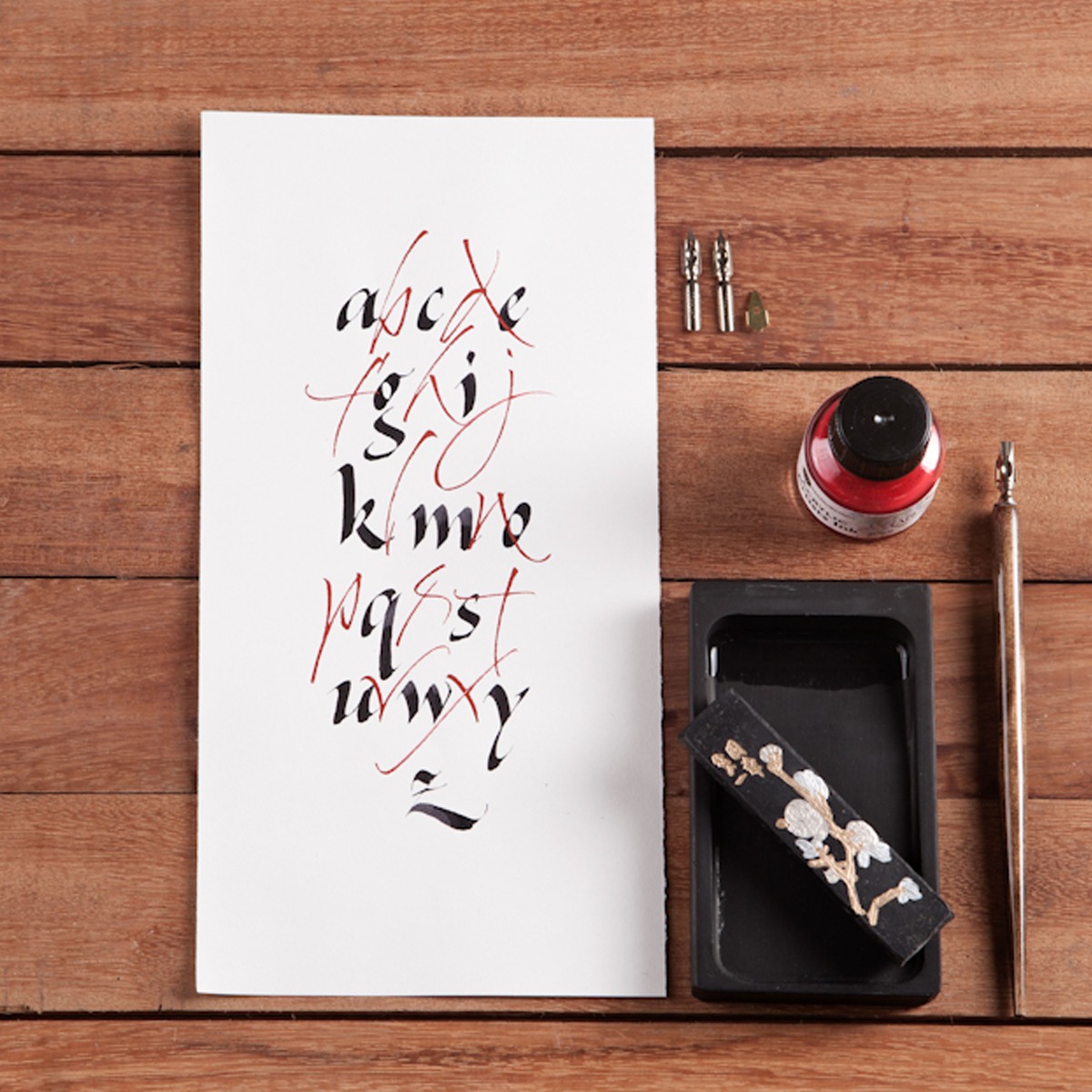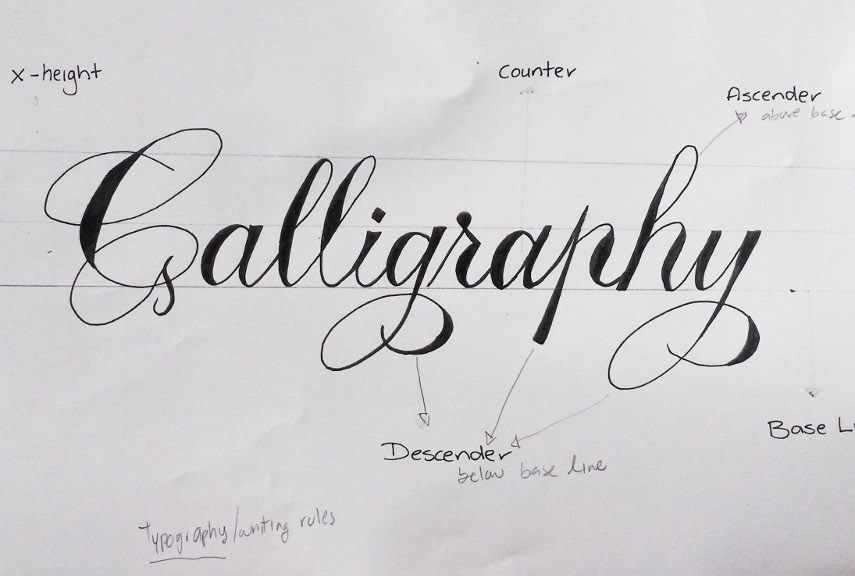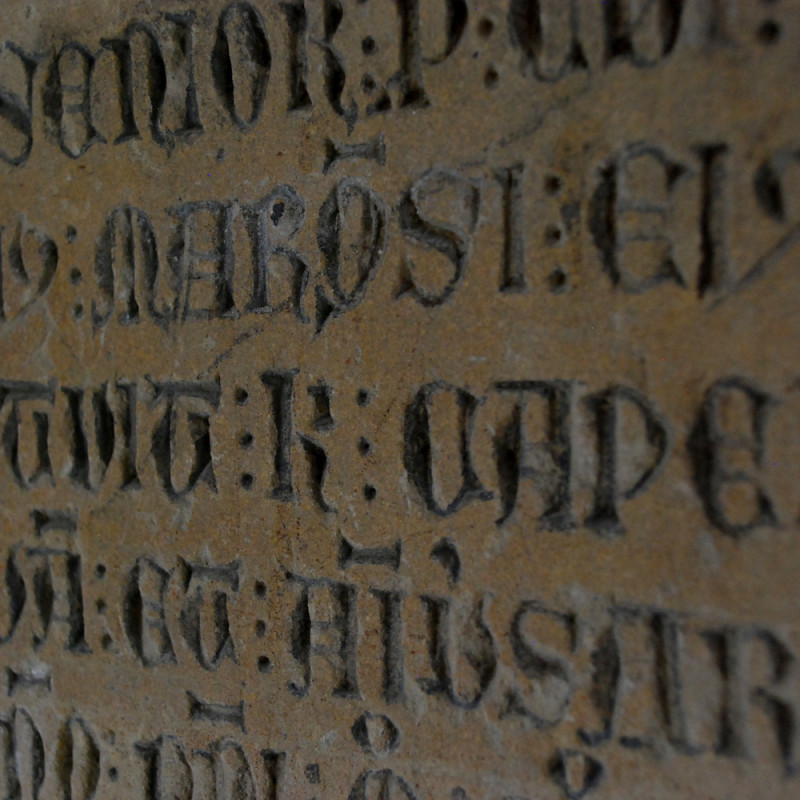
Download 65+ Different Font Calligraphy Hand Lettering Calligraphy Fonts Alphabet By Doodle
Various examples of calligraphy in different languages and writing systems throughout history Calligraphy (from Greek καλλιγραφία (kalligraphía) 'beautiful writing') is a visual art related to writing. It is the design and execution of lettering with a pen, ink brush, or other writing instrument.

The History Of Calligraphy Calligraph Choices
calligraphy, the art of beautiful handwriting.The term may derive from the Greek words for "beauty" (kallos) and "to write" (graphein).It implies a sure knowledge of the correct form of letters—i.e., the conventional signs by which language can be communicated—and the skill to make them with such ordering of the various parts and harmony of proportions that the experienced.

The History of Calligraphy YouTube
Chinese calligraphy centers on the "Four Treasures of the Study," which describes the brush, ink, ink stone, and paper used in the Chinese tradition. The oldest existing brushes in Chinese calligraphic history date back to 202 BC. For more on the history of calligraphy, see: A History of Writing; The Calligraphy Heritage at Reed

History Of Calligraphy
Chinese calligraphy, the stylized artistic writing of Chinese characters, the written form of Chinese that unites the languages (many mutually unintelligible) spoken in China. Because calligraphy is considered supreme among the visual arts in China, it sets the standard by which Chinese painting is judged. Indeed, the two arts are closely related.

History Of Calligraphy A Complete Timeline Overview History of calligraphy, History, Script
Although the earliest form of Chinese writing can be found inscribed onto animal bones (called "oracle bones") from as early as 1200BC, calligraphy with brush and ink took off during the Han Dynasty roughly 1000 years later. Calligraphy was, for a long time, the most revered art form in China, more so than painting.

Calligraphy and Illumination, Angelopoulos. On vellum. Calligraphy Words, Penmanship
It was 'beautiful writing'. The history of calligraphy is the history of people consciously identifying handwriting as a potential art-form separate and distinct from any other method of shaping writing symbols (woodcut, typography, engraving, skywriting, etc).

Latest News, Breaking News, trending news, live updates, WTN Special Window To News
HISTORY OF CALLIGRAPHY. From the moment the first quill hit the first piece of parchment, humans have been looking for the most beautiful and decorative way to present their writing.. From holy texts to royal decrees, Chaucer to Shakespeare and Greek to Latin, all writing was passed down from generation to generation - strange to think.

Pin by Shaikh Samina on Urdu Language Urdu calligraphy, How to write calligraphy, Arabic
Julian Waters Hand Lettering and Design, 301-253-3422. [email protected]. The Chinese calligrapher Wang Hsi-chih said, "Writing needs meaning, whereas calligraphy expresses itself above all through forms and gestures. It elevates the soul and illuminates the feelings." In this respect calligraphy is very close to painting and they have.

A brief history of Calligraphy History of calligraphy, Lettering, Chalk lettering
Though the Kufic writing is believed to have been founded in a city in Mesopotamia around 683 CE, the veracity of the exact origins remains unknown. The manuscripts of the holy Quran were written using this script and were oblong, rather than the more popular codex format.

Calligraphy Alphabet old english calligraphy alphabet
The history of calligraphy and how it has changed over the years, from traditional script to modern lettering. Is calligraphy really a lost art?

What is Calligraphy? Discover Different Types of Writings Widewalls
The word 'calligraphy' is a combination of two Greek words: kallos (beauty) and graphein (to write). So, in other words, we can say that calligraphy refers to writing in aesthetically pleasing forms. Modern forms of written communication — emails and text messages — have eliminated the need for handwritten notes and letters.

Pin by Gabriel Rodriguez on caligrafia Hand lettering quotes, Calligraphy quotes, Hand lettering
Calligraphy established itself as the most important ancient Chinese art form alongside painting, first coming to the fore during the Han dynasty (206 BCE - 220 CE). All educated men and some court women were expected to be proficient at it, an expectation which remained well into modern times. Far more than mere writing, good calligraphy exhibited an exquisite brush control and attention to.

Hand written calligraphy alphabet. Detailed vector stock illustration Graffiti Lettering
The term calligraphy, or the art of beautiful handwriting, has its roots and origins in many different countries around the world. It's most commonly associated with China as that's where it's believed to have originated, but different forms were created in various countries around the world including Japan, India, Tibet, and Europe.

History vector vectors Black and White Stock Photos & Images Alamy
The writing of one in particular, Angelus Vergecius, was used as a model for the French Royal Greek type, which has influenced the form of Greek printing down to the present day. Calligraphy - Formal Minuscule, 10th-14th Century: From about the middle of the 10th century, a smoother, almost mechanical appearance can be noticed in an increasing.

"History Calligraphy Label" Sticker for Sale by thebangs Redbubble
The early history of calligraphy in China is dominated by the work of professional court scribes. However, in the centuries following the Han Dynasty (206 B.C.-. Although command of the written word and the ability to write beautifully were crucial responsibilities for Chinese elites who served in the government bureaucracy, by the fourth.

History Of Calligraphy
The very first known record of writing dates around 3500 years BC in Mesopotamia (present-day Iraq). This is known as the Cuneiform script, which mainly consisted of making marks on wet clay tablets. Tablet with proto-cuneiform pictographic characters (end of 4th millennium BC), Uruk III.
